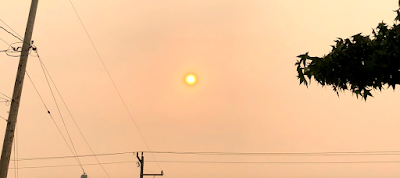The Hipster Tableau, an @Instagram Joint
I love social media, but I also hate social media. It's revolutionizing how organizations and individuals communicate with each other and disseminate information, but it's also destroying language and ruining attention spans. It's giving voice to the oppressed and disenfranchised, but it's also creating jobs for the least talented and most privileged among us. And while it's empowering small businesses and entrepreneurs, it's also making us all beholden to the whims of the handful of massive tech firms that run the platforms and are actively seeking out more and more innovative ways to mine our personal data for profit.
I'm a grown up, so I understand that nothing is or is meant to be perfect, that slick marketing presents idealized depictions of products and services that are inherently imperfect if not intrinsically evil, but I can't help but have my expectations ruined all the same, again and again.
This all brings me to some observations on a genre of photo that I've noticed with increasing frequency on my Instagram feed of late. I like to call this genre the Hipster Tableau.
For example:
This photo is of a new product from Blue Bottle Roasters, Silicon Valley's coffee roaster of choice. It typifies the Hipster Tableau genre, which traffics in the meticulous placement of goods for sale in aesthetically pleasing arrangements. It's a compelling format for product promotion that borrows from the practices of upscale home decor and hipster artisan oddity shops. One will notice the symmetry of the two cups and java jackets framing the single-purpose messenger bag. It's clean without sacrificing warmth, and there's a sense that these products were forged at least to some extent by human hands, possibly even by those of the designers. I want one of these kits, even though I know I don't need it and consider the product to be overwrought.
These photos also frequently situate a product alongside an activity that correlates with the brand and its customer base. For example, in arranging these glasses alongside knitting needles and yarn, Warby Parker is attempting to engage its D-I-Y and artisan craft-loving audience by associating these slightly retro frames with practitioners of a particular craft.
Again, I have a love/hate relationship with these photos. I love them because they are aesthetically pleasing and often promote brands and products that I consume (eyeglasses and coffee foremost among them) and want to see succeed.
But I hate them because of their cloying salesmanship and overly twee design cues, because of the clear evidence of marketing acumen that has been brought to bear to exploit our interest in correlative and aspirational lifestyles, and because, moreover, they signal that Instagram is ultimately just another virtual marketing platform where expressions of creativity are a mere incidental occurrence.
It's fine, though, I suppose. There's enough Internet to go around, for both the exploiters and the exploited. For now.
I'm a grown up, so I understand that nothing is or is meant to be perfect, that slick marketing presents idealized depictions of products and services that are inherently imperfect if not intrinsically evil, but I can't help but have my expectations ruined all the same, again and again.
This all brings me to some observations on a genre of photo that I've noticed with increasing frequency on my Instagram feed of late. I like to call this genre the Hipster Tableau.
For example:
LoadingIntroducing the new @timbuk2 x Blue Bottle Travel Kit. Everything you'll need to #BrewWhereYouAre.
This photo is of a new product from Blue Bottle Roasters, Silicon Valley's coffee roaster of choice. It typifies the Hipster Tableau genre, which traffics in the meticulous placement of goods for sale in aesthetically pleasing arrangements. It's a compelling format for product promotion that borrows from the practices of upscale home decor and hipster artisan oddity shops. One will notice the symmetry of the two cups and java jackets framing the single-purpose messenger bag. It's clean without sacrificing warmth, and there's a sense that these products were forged at least to some extent by human hands, possibly even by those of the designers. I want one of these kits, even though I know I don't need it and consider the product to be overwrought.
These photos also frequently situate a product alongside an activity that correlates with the brand and its customer base. For example, in arranging these glasses alongside knitting needles and yarn, Warby Parker is attempting to engage its D-I-Y and artisan craft-loving audience by associating these slightly retro frames with practitioners of a particular craft.
LoadingMcKee in Moonstone—don’t overlook this new color's left-to-right gradient. (It’s our first ever so we’re particularly pleased.)
Again, I have a love/hate relationship with these photos. I love them because they are aesthetically pleasing and often promote brands and products that I consume (eyeglasses and coffee foremost among them) and want to see succeed.
But I hate them because of their cloying salesmanship and overly twee design cues, because of the clear evidence of marketing acumen that has been brought to bear to exploit our interest in correlative and aspirational lifestyles, and because, moreover, they signal that Instagram is ultimately just another virtual marketing platform where expressions of creativity are a mere incidental occurrence.
It's fine, though, I suppose. There's enough Internet to go around, for both the exploiters and the exploited. For now.

Comments
Post a Comment